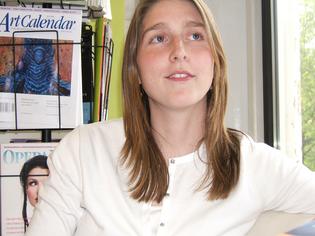 A revelation about how cities evolve comes to the Independent’s “Democracy School“ diarist on her way back from Week Two.
A revelation about how cities evolve comes to the Independent’s “Democracy School“ diarist on her way back from Week Two.
May 9, 2006
On my walk home from class tonight, I realized that the tale of New Haven lies in the two blocks on either side of my apartment.
On the block to my right sits Firehouse 12. This building just oozes cool. On the weekend it hosts jazzy, original tunes for slightly more than the price of a movie. The bar downstairs offers three-dollar Pabst for low budgets and fancy named cocktails for the slightly more daring. And the heavy wooden doors outside remind you that nothing worthwhile comes without a little sweat.
Firehouse 12 must be a city’s dream: a historic building, abandoned for over 40 years, suddenly transformed into a hip house of tunes. New, young owners who not only love New Haven, but spend time and dollars in the community — “reading newspapers at the local coffee shops, putting ads in the local newspapers, offering input on the local arts boards. Here the city has a new spot that spreads culture, community and pride all in one.
But then there’s the block to the left. On this side of my apartment sits an old abandoned building. Most of the windows are nailed shut with boards — “the rest glare with shattered bits of glass. Someone’s painted “Cardboard City” on the brick. The alley is littered with trash. And in the back, not far from my third-floor bedroom window, rests a single 4×4 board. I’m pretty sure a man sleeps under the board most nights. I usually hear him sneaking “home” late at night, swearing under his breath, clinking the bottles he’s collected that day. I think he has a blanket. And the board hopefully protects at least half of him from the rain.
Tonight in class, Andy Rizzo — “the executive director of the Livable City Initiative — “talked a good deal about blight. In 1996, the number of rundown, beat-up houses in New Haven numbered nearly 1,500. Today that number’s down to just 300. But when a classmate asked how to erase those final few, Andy Rizzo said good luck. For every 10 houses you fix up, eight others suddenly need repair. And don’t forget about all the red tape.
As I walked home from class, I realized that this kind of contradiction is what city officials must face every day. Sure, businesses today are actively applying for grants to spiff up their facades. Of course the Office of Cultural Affairs is ecstatic to announce that Dave Brubeck is swinging into town for this summer’s 25th Anniversary Jazz Festival. But what about tomorrow? Tomorrow, a housing official may discover that a family went the whole winter without any heat. Tomorrow, a retail chain may refuse to open up in downtown New Haven because the “numbers just aren’t that good.” But does all the bad of tomorrow erase all the good of today?
For every new Firehouse 12 lies a crumbling brick building with a 4×4 board just a block or two away. And you know what I realized tonight? It might just never change — ¬¶
(To read the previous installment of Kara Arsenault’s Democracy School diary, click here.)